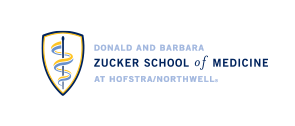Epidemiology of Meningitis and Encephalitis in Infants and Children in the United States, 2011-2014.
Publication Date
2019
Journal Title
Pediatr Infect Dis J
Abstract
BACKGROUND: Large epidemiologic studies evaluating the etiologies, management decisions and outcomes of infants and children with meningitis and encephalitis in the United States are lacking.
METHODS: Children 0-17 years of age with meningitis or encephalitis as assessed by International Classification of Diseases, Ninth Revision, codes available in the Premier Healthcare Database during 2011-2014 were analyzed.
RESULTS: Six thousand six hundred sixty-five patients with meningitis or encephalitis were identified; 3030 (45.5%) were younger than 1 year of age, 295 (4.4%) were 1-2 years of age, 1460 (21.9%) were 3-9 years of age, and 1880 (28.2%) were 10-17 years of age. Etiologies included enterovirus (58.4%), unknown (23.7%), bacterial (13.0%), noninfectious (3.1%), herpes simplex virus (1.5%), other viruses (0.7%), arboviruses (0.5%) and fungal (0.04%). The majority of patients were male [3847 (57.7%)] and healthy [6094 (91.4%)] with no reported underlying conditions. Most underwent a lumbar puncture in the emergency department [5363 (80%)] and were admitted to the hospital [5363 (83.1%)]. Antibiotic therapy was frequent (92.2%) with children younger than 1 year of age with the highest rates (97.7%). Antiviral therapy was less common (31.1%). Only 539 (8.1%) of 6665 of patients received steroids. Early administration of adjunctive steroids was not associated with a reduction in mortality (P = 0.266). The overall median length of stay was 2 days. Overall mortality rate (0.5%) and readmission rates (
CONCLUSION: Meningitis and encephalitis in infants and children in the United States are more commonly caused by viruses and are treated empirically with antibiotic therapy and antiviral therapy in a significant proportion of cases. Adjunctive steroids are used infrequently and are not associated with a benefit in mortality.
Volume Number
38
Issue Number
1
Pages
37-41
Document Type
Article
Status
Faculty
Facility
School of Medicine
Primary Department
Pathology and Laboratory Medicine
Additional Departments
Molecular Medicine
PMID
DOI
10.1097/INF.0000000000002081



